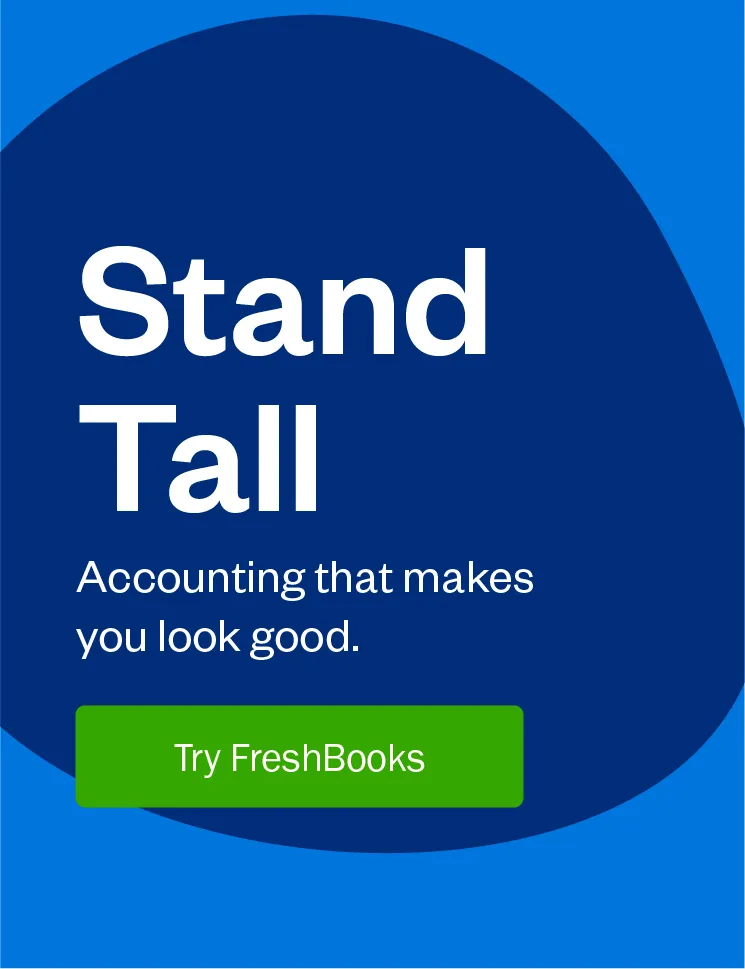Learn more about the T777 Form, how it helps with claiming eligible expenses, and what your employees (and you) need to know to complete it.

If you or your employees earn employment income and are required to pay expenses to fulfill job responsibilities, the Statement of Employment Expenses (T777 Form) is a critical document. This form enables eligible individuals to claim employment expenses—such as motor vehicle expenses, home office expenses, and legal fees—on their tax returns, reducing their taxable employment income.
From claiming allowable motor vehicle expenses to deducting accounting and legal fees, the T777 Form is designed to account for costs incurred for employment purposes. Whether it’s property taxes, leasing costs, or the cost of maintaining a workspace in your home, this form ensures these expenses are properly reported and deducted.
Keep reading to understand how this form applies to different expenses like entertainment costs, travelling expenses, and temporary relocation expenses, and how it interacts with credits like the GST/HST rebate.
Table of Contents
What Is the T777 Form?
The T777 tax form, or Statement of Employment Expenses, is a Canada Revenue Agency (CRA) tax form that helps commission-based and salaried employees claim a variety of work-related expenses that their employer has not reimbursed. It’s essential for reducing the tax burden on employment income by accounting for incurred expenses directly related to fulfilling job responsibilities.
Eligible expenses you can claim on Form T777 include:
- motor vehicle expenses (fuel, maintenance, and allowable leasing costs)
- home office expenses (like property taxes, mortgage interest, or home internet access fees used for employment purposes)
- entertainment expenses (including food and beverage costs)
- traveling expenses (such as lodging, airfare, or public transportation)
- accounting and legal fees (including reasonable fees for preparing your taxes)
- parking costs related to work
- training costs for job-related development
- office rent and supplies used exclusively for work
If your employer is registered for GST/HST, you may also qualify for a GST/HST rebate when claiming eligible expenses. This applies to expenses like motor vehicle use or office rent, providing an additional benefit when filing your taxes.
For those earning employment income in Quebec, the equivalent form to use is the TP-59-V form for claiming employment expenses.
Why Do Some Employees Need a Statement of Employment Expenses?
Not all employees can claim expenses, but those who meet the following conditions may use the T777 form to deduct eligible costs from their employment income:
- Their employer requires them to pay certain expenses (like motor vehicle or temporary relocation costs) to fulfill their duties.
- Their employer has not fully reimbursed these incurred expenses.
Additionally, if employees are claiming home office expenses, the space must be used specifically for employment purposes and not shared with personal activities.
To confirm eligibility, you, as the employer, must provide your employee with a T2200 form (Declaration of Conditions of Employment). This document verifies that these expenses are necessary for their role and outlines any allowances provided or costs not reimbursed.
Examples of claimable expenses include legal fees for defending employment-related income, leasing costs for equipment or vehicles, and temporary relocation expenses related to job requirements.
For the latest updates on claiming work-related expenses for the 2024 tax year, consult the CRA’s T4044 publication or their official website.
What Does the T777 Form Look Like?
The T777 form has four key sections, each designed to help employees claim specific employment expenses on their Income Tax and Benefit Return. Here’s a breakdown of what to expect and how employees should complete each part.
Expenses
In this section, employees must list all work-related expenses incurred during the tax year. These could include:
- accounting and legal fees (e.g., reasonable accounting fees for tax preparation or employment-related legal fees)
- supplies needed for employment purposes
- food and beverage expenses (e.g., meals consumed while traveling for work)
- entertainment expenses
- equipment leasing costs
- musical instruments (for musicians employed by an organization)
- daily parking fees for work purposes
- training costs related to employment
- home internet access fees
- apprentice mechanic or tradesperson tools
Expenses like home office expenses, motor vehicle expenses, and capital cost allowance (CCA) are calculated in later sections and then added to this total. Employees will report the final amount from this section on line 22900 of their tax return.
Calculation of Allowable Motor Vehicle Expenses
This section helps employees determine the percentage of their motor vehicle expenses that can be written off for employment purposes. Claimable costs include:
- fuel and oil
- repair and maintenance costs
- insurance premiums for work-use vehicles
- licence and registration fees
- leasing costs or loan interest for vehicles
- depreciation of a motor vehicle under capital cost allowance
Employees need to track their odometer readings to calculate the kilometers driven for work versus personal use. This percentage determines how much of their own motor vehicle expenses can be deducted. Keeping detailed monthly credit card statements or receipts for vehicle-related purchases is crucial to ensure accurate reporting.
Calculation of Work Space-in-the-Home Expenses
Employees who work from home or maintain a home office can use this section to claim eligible costs like:
- rent
- property taxes
- utilities (e.g., electricity, heating, and water)
- maintenance costs for the workspace
The allowable amount depends on what portion of their home is used exclusively for work and the percentage of time spent working there. Salaried employees and commission-based employees are subject to different rules regarding which expenses they can deduct. For example, commission-based employees may also claim a portion of their home internet access fees or home office furniture under certain conditions.
Capital Cost Allowance (CCA) Schedule for Employees
The CCA schedule allows employees to claim the depreciation of high-cost assets they use for employment, such as:
- motor vehicles
- musical instruments
- specialized equipment
Employees can claim a percentage of the asset’s cost each year based on its depreciation rate. For example, if an asset qualifies as accelerated investment incentive property, employees might be able to claim a higher CCA rate in the first year.
It’s important to note that employees can only claim the portion of the asset’s depreciation related to its use for employment purposes. If an item is used for both work and personal use, they need to calculate the percentage of time it’s used for work.
How to Claim Work-Related Expenses With Form T777
To successfully claim employment expenses, employees must complete the T777 form alongside their annual tax return. Here’s how to navigate the process step-by-step:
1. Gather your documentation
Before diving into the form, collect all receipts, invoices, and supporting documents for expenses you’ve incurred. This includes:
- Monthly credit card statements for expenses like fuel, meals, or equipment leasing costs.
- Records of traveling expenses, such as public transit passes or hotel stays.
- Utility bills and property tax statements if claiming home office expenses.
2. Track your usage percentages
For deductions like motor vehicle expenses and work space-in-the-home expenses, you’ll need to calculate what percentage of these assets were used specifically for employment purposes. For example:
- Keep a log of kilometers driven for work versus personal use.
- Measure the square footage of your home office compared to your total living space.
3. Complete the necessary sections of the T777
Fill out all applicable parts of the form, ensuring accuracy in areas like:
- Allowable motor vehicle expenses, including fuel, maintenance, and licensing.
- Capital cost allowance for eligible items like tools or vehicles.
- Total employment expenses incurred during the tax year.
4. Claim the GST/HST rebate
If your employer is GST/HST-registered, complete the GST370 form to claim a rebate on eligible expenses that included sales tax. Combine this with the T777 to maximize your deductions.
5. Attach the T2200 form
Ensure your employer has provided a T2200 (Declaration of Conditions of Employment) form. This document is essential to prove that your claimed expenses are a condition of your employment.
Helpful Tips for Employees Completing the T777 Form
As mentioned earlier, your employees won’t be able to fill out this form unless they receive a T2200 from you. They’ll then use that information to complete the T777 and submit it to the CRA along with their tax return.
Once you send the T2200 to your employees, they can visit the Canada Revenue Agency website to download the saveable T777 form and fill it out right on their computer. Alternatively, they can hire a tax preparer to submit their return on their behalf at the end of the tax year. If they file on their own, employees should only include their eligible expenses.
Taxpayers who are eligible for the GST/HST rebate and want to claim it will also need to complete the GST370 tax form and claim the rebate on line 45700 of their income tax return.
Once all relevant tax forms are complete, they can submit the documents to the CRA via NETFILE (or have their tax professional do so with EFILE).
Here’s a brief summary:
- Keep detailed records of expenses you paid, including receipts and invoices, for all claims made.
- Use the T2200 form provided by your employer to substantiate employment-related expenses.
- Remember to calculate eligible credits like the GST/HST rebate for expenses subject to sales tax.
- Review the CRA’s T4044 guide for specific details on eligible expenses and deductions for the 2024 tax year.
By carefully completing each section of the T777 form and maintaining proper documentation, employees can maximize their deductions while staying compliant with CRA requirements.
Common Mistakes to Avoid When Using Form T777
Mistakes on tax forms can lead to missed deductions or even audits. Here are some pitfalls to watch out for when completing the T777:
- Failing to track expenses: Without proper documentation, you cannot claim costs like allowable motor vehicle expenses or temporary relocation expenses.
- Over-claiming expenses: For shared-use items like a vehicle or home office, claiming 100% of costs when only a portion was for work is not allowed. Calculate percentages carefully.
- Ignoring deadlines: Filing late can result in penalties and missed opportunities for refunds, especially when claiming rebates like the GST/HST rebate.
- Neglecting the T2200 form: Forgetting to attach this declaration could invalidate your expense claims.
How Employers Can Support Employees With Form T777
Employers play a key role in ensuring their employees can properly claim eligible expenses. Here’s how you can assist:
1. Provide the T2200 form
This form verifies that employees are required to pay specific expenses as a condition of their employment. Fill it out completely, detailing any allowances or reimbursements you’ve provided.
2. Educate employees
Offer guidance on what expenses are deductible and how to track them. Highlight common categories like home internet access fees, property taxes, and leasing costs for work-related items.
3. Simplify tracking
Encourage employees to use expense tracking tools or provide them with templates for logging motor vehicle expenses, traveling expenses, and other costs.
4. Reimburse when possible
While the T777 helps employees claim unreimbursed costs, directly reimbursing expenses—like legal fees or parking costs—can alleviate their financial burden and simplify tax filing.
Tax Planning Tips for Employees and Employers
Proper planning can help employees and employers make the most of deductions and credits while staying compliant with CRA regulations:
- Plan for temporary relocations: If employees need to move for work, ensure they track eligible temporary relocation expenses like moving costs, accommodation, and meals.
- Encourage accurate record-keeping: Emphasize the importance of retaining receipts and logs for costs like training costs, food and beverage expenses, and investment incentive property.
- Leverage accelerated investment incentives: If employees purchase assets like vehicles or equipment, they may qualify for an accelerated capital cost allowance.
- Optimize GST/HST claims: Make sure employees understand how to claim rebates on work-related expenses, especially those involving sales tax.
By working together, employees and employers can ensure tax season is smooth and financially beneficial for everyone involved.
Understanding Your Tax Forms: A Key to Saving on Taxes
Let’s face it—filling out tax forms like the T777 or T2200 probably isn’t your idea of a great time. But understanding these documents is crucial for you and your employees to maximize your tax savings.
Accurately reporting employment income, claiming eligible employment expenses, and ensuring compliance with Canada Revenue Agency (CRA) requirements can feel overwhelming. From tracking motor vehicle expenses and home office expenses to calculating capital cost allowance, preparing for tax season involves more than just a few forms.
The good news? Tax preparation doesn’t have to be a last-minute scramble. By adopting smart organizational habits—like keeping detailed records of incurred expenses, monthly credit card statements, and receipts for parking costs or training costs—you’ll be better equipped to manage forms like the T777 and avoid missed deductions.
Using the right tools and strategies, such as software that tracks deductible expenses like legal fees, property taxes, or traveling expenses, can save you time and help uncover hidden opportunities to reduce your tax bill. It’s not just about compliance—it’s about maximizing the value of reasonable accounting fees, GST/HST rebates, and eligible expenses for your business and employees.
Tax season may only come once a year, but effective preparation is a year-round effort. Start early, stay organized, and you’ll not only make filing easier—you’ll also keep more money where it belongs: in your pocket.
This post was updated in December 2024.

Written by Feli Oliveros, Freelance Contributor
Posted on January 5, 2022
This article was verified by Kristen Slavin, CPA

 Canada Tax 101: What Is a W-8BEN Form?
Canada Tax 101: What Is a W-8BEN Form? Canadians: What Changes Can You Expect on Your Small Business Tax Return?
Canadians: What Changes Can You Expect on Your Small Business Tax Return? Canada Tax: Your Guide to Form T2125
Canada Tax: Your Guide to Form T2125





